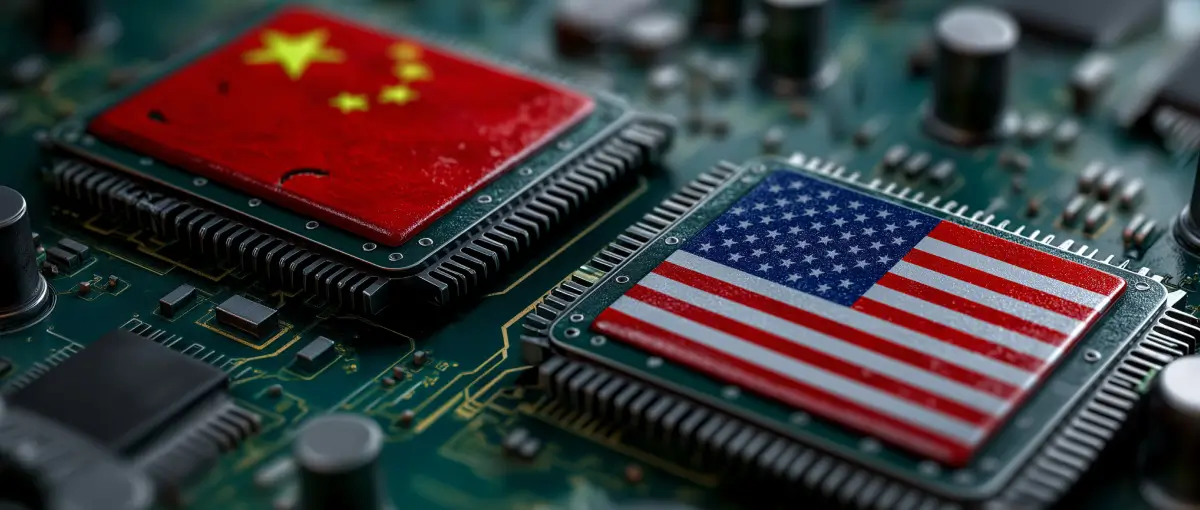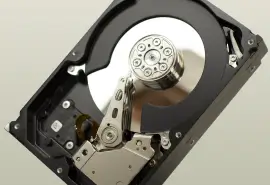On April 2, 2025, President Donald Trump announced sweeping tariffs against more than 80 countries importing finished goods and raw materials to American markets. The trade strategy aims to correct what Mr. Trump describes as unfair practices that harm U.S. exporters and workers. Its two-tiered approach imposes 10% tariffs on all trading partners and additional duties on countries believed to be the worst offenders. The importer who purchased products from overseas is responsible for the tariff. U.S. Customs releases the shipment upon payment.
A week later, Mr. Trump announced a 90-day pause on reciprocal tariffs to negotiate new trade deals. The U.S. continues to enforce steep tariffs against China.
So, what does that mean for consumers looking to buy a storage device? It ultimately depends on what happens in negotiations between the U.S. and its trading partners in the coming months. However, most analysts predict the policy will raise costs for consumers on a wide range of goods if implemented. That forecast includes electronics like hard disk drives (HDDs), solid-state drives (SSDs), and devices using NAND flash memory, such as an iPhone.
Below is an explanation of how these tariffs affect the data storage industry. We also offer some advice on what to expect if you plan to buy a new device. No matter where you may reside.
Where Do Hard Drives and Other Storage Devices Come From?
East Asia produces most of the world’s digital storage. Countries like China, South Korea, Japan, Thailand, Malaysia, Singapore, and the Philippines fill roles to make these critical devices. Each country was targeted with reciprocal tariffs to address persistent trade surpluses with the U.S. In the following weeks, Mr. Trump continued to increase duties on Chinese imports as Beijing and Washington traded retaliatory tariffs.
This table shows the effective tariff rate (as of April 17, 2025) against East Asian countries involved in manufacturing storage devices:
| Tariffs by Country Involved in Data Storage Manufacturing | |
|---|---|
| Country | Effective Tariff Rate |
| China | 245% |
| Thailand | 47% |
| South Korea | 36% |
| Japan | 34% |
| Malaysia | 34% |
| The Philippines | 28% |
| Singapore | 20% |
Extensive tariffs threaten to raise costs for all major storage brands and consumer electronics like the iPhone.
The supply chains exposed to these tariffs include:
| Data Storage Manufacturing by Country | |
|---|---|
| Country | Products |
| China |
|
| Thailand |
|
| South Korea |
|
| Japan |
|
| Malaysia |
|
| The Philippines |
|
| Singapore |
|
| United States |
|
The above table is an incomplete list of popular products from storage suppliers. The origin of devices may change. However, it does highlight East Asia’s importance to the storage industry. In addition, the list does not reflect that companies build specific components in other countries.
For example, many companies opt for third parties to fabricate complex SSD controllers in state-of-the-art foundries in Taiwan. Samsung designs NAND flash memory in South Korea but builds much of its media in China. Seagate spreads its supply chain for hard drives across a half-dozen countries. It makes read/write heads in the U.S. and Northern Ireland, substrates in Malaysia, and platters in Singapore. The final assembly occurs at a plant in China or Thailand.
Domestic production of digital storage is limited to magnetic tape for archives and enterprise systems. Yet servers and network storage units made in the U.S. are still affected by the increased cost of importing member drives.
Impact of Tariffs on the Cost of Storage Devices

The long-term impact of tariffs on data storage is unknown despite the extensive duties facing East Asian exporters.
The Trump administration plans to hold bilateral talks with trade partners in the coming weeks and months. Those discussions will shape the market for storage devices.
Part of the confusion stems from an inconsistent message on some tariffs. Initially, the U.S. exempted semiconductors and chips from blanket tariffs in Annex II of the Harmonized Tariff Schedule. However, U.S. officials soon declared that tariff exemptions on electronics are temporary. Sector-focused duties that fall outside of the reciprocal tariffs would still apply to imported electronics.
Abrupt announcements and reversals on tariffs have created an uncertain environment for storage companies and their customers.
Here are five potential effects of tariff hikes on storage devices, assuming the U.S. imposes the announced duties:
1. Storage Becomes More Expensive in the U.S.
Many companies raise retail prices to offset import costs. A recent survey from commerce software Zilliant reported that 44% of U.S. businesses plan to pass the cost of tariffs to customers.
So far, companies like Western Digital, Seagate, Samsung, and Micron have not said whether they will increase storage prices in the U.S. But, given East Asia’s status as the industry’s manufacturing hub, higher price tags seem likely for American consumers. Brands may try to absorb some of the cost to offer a more competitive price. Check multiple retailers for hard drive, SSD, RAID, and smartphone sales in volatile times.
2. Storage Becomes More Expensive Around the World
A prolonged trade war between the U.S. and China could affect the cost of storage devices elsewhere.
Chief analyst Ben Wood of CSS Insights, a tech consultancy based in London, told the BBC that companies may raise prices globally if tariffs remain in place. Mr. Wood suggested that companies like Apple might want to avoid large price disparities in different markets. He also speculated that Apple may offer financing options to spread the cost of an iPhone over a longer period.
3. Storage Becomes Less Available

Ambiguous guidance on international trade often makes it difficult for companies to estimate costs and project revenue. An April survey in Chief Executive magazine showed that CEO confidence fell to a multi-year low. 76% of respondents said the tariffs would hurt their business. A growing number of CEOs forecast lower revenues, profits, capital expenditures, and headcounts.
If data storage companies anticipate reduced demand due to increased prices, they might decrease the amount of storage they make. Sometimes, scaling back is not even a conscious decision. Shifting production away from tariffed nations is not an instant process. That is especially true for factories that manufacture hard drive components or assemble disks. These plants require advanced cleanrooms and precision tools to prevent physical defects.
4. Storage Takes Longer To Develop
Storage brands may invest less in research and development in times of uncertainty. It could mean delayed upgrades on existing products if companies feel the market will not support the cost of new storage devices.
5. Cloud Storage Becomes More Expensive
Providing cloud services is not cheap. Amazon Web Services (AWS), Microsoft Azure, Google Cloud Platform (GCP), and Meta upgrade their infrastructure on a rolling basis. The tech giants expect to spend over $300 billion combined in 2025 on infrastructure. They will allocate most of that money toward improving and maintaining data centers, networking, and AI servers. If hardware becomes substantially more expensive because of tariffs, the companies could raise subscription costs to relevant services.
Bottom Line: Will Tariffs Make Storage Devices More Expensive?
Most likely, according to experts. The supply chains are deeply enmeshed in East Asia.
However, talks between U.S. officials and other countries over the next few months will determine the exact burden on consumers.
You can consider these steps to minimize the impact of tariffs on storage devices:
- Buy what you need before reciprocal tariffs take effect if you can afford it.
- Buy refurbished storage devices from reputable vendors.
- Buy products from non-tariffed nations if possible.
- Optimize your current device to prolong its lifespan.
Secure Data Recovery, the leader in data recovery services for hard drives, SSDs, RAID, and iPhones, will continue to follow this story.










